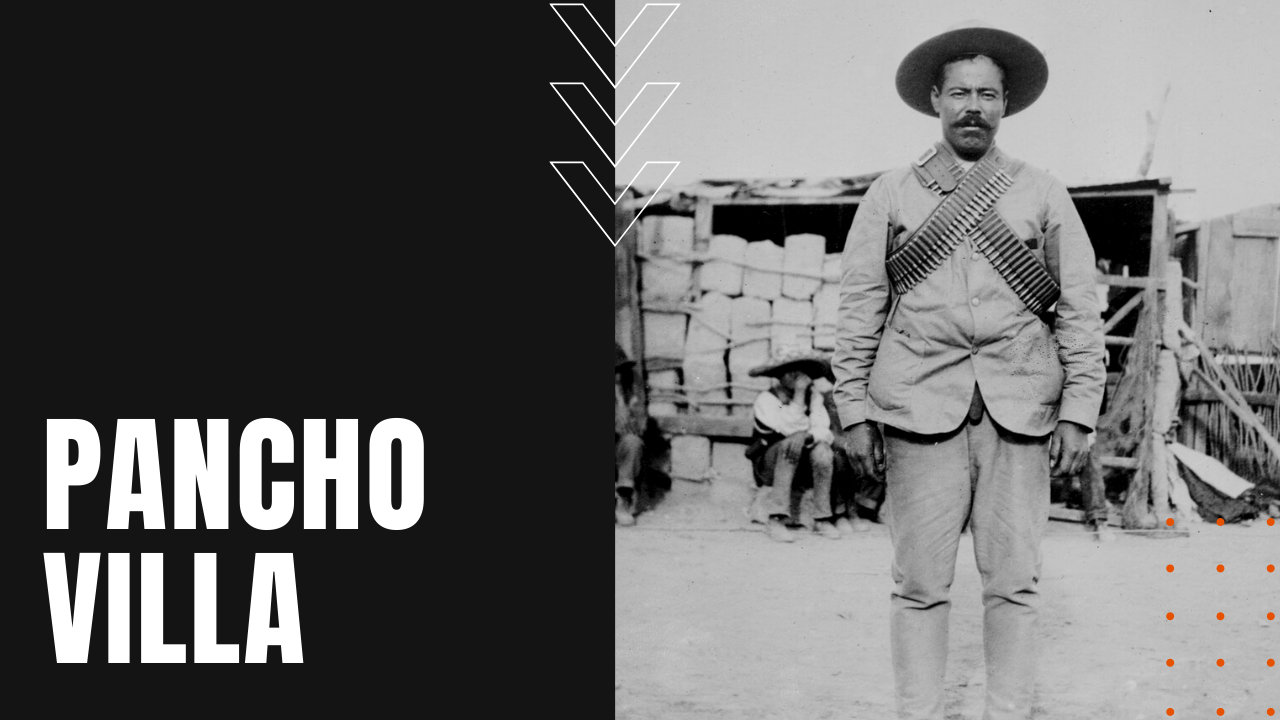Pancho Villa Biography

Who Was Pancho Villa?
Born into a poor sharecropping family in 1878 Durango Mexico, after his father died, Pancho Villa dropped out of school to support his mother and four siblings, until he killed a hacienda owner who raped one of Pancho’s sisters. Stealing a horse and fleeing into the hills, Pancho joined up with banditos until he was arrested in 1902 and inducted into the Federal army—a practice adopted by then-President Porfirio Diaz to deal with troublemakers.
Mexican Revolutionary
After killing an army officer and stealing his horse, Pancho Villa became known to his friends as La Cucaracha or “the cockroach.” While living as a fugitive, Pancho joined Francisco Madero in the nine-and-a-half-year Mexican Revolution, where his fighting and leadership skills rose him to the rank of colonel. When Madero was removed from power in 1912, Pancho fled to the United States, returning to form his own military army known as Division del Norte.
After joining forces with fellow revolutionaries Venustiano Carranza and Emiliano Zapata in an attempt to remove Victoriano Huerta from power, Pancho proved his medal as a brilliant tactician on the battlefield, leading to his 1913 election as provisional governor of Chihuahua, which allowed him to recruit stronger military generals and raise more money for a drive south against Huerta’s Federal Army. At the height of Villa’s power and popularity in late 1914 and early 1915, the U.S. toyed with the idea of recognizing him as Mexico’s legitimate authority, until a Civil War broke out between Carranza and Pancho Villa.
Pancho Villa’s Division del Norte suffered a resounding defeat during the summer of 1915, followed by the U.S.-backed Second Battle of Agua Prieta in November of that same year. Angered by American support of Carranza, Pancho Villa raided the border town of Columbus New Mexico in early 1916, and while the U.S. sent a contingent of soldiers to hunt down the revolutionary, Pancho Villa was never captured. When President Carranza was ousted from power in 1920, Pancho Villa negotiated an amnesty deal with interim President Adolfo de la Huerta, who awarded Pancho with a landed estate in northern Mexico in exchange for a promise to retire from politics.
How Did Pancho Villa Die?
Pancho Villa was assassinated by seven gunmen in 1923 while preparing to board a train. Before and after his death, Pancho Villa’s life was celebrated in films and dime store novels, while in 1976, his remains were reburied in the Monument to the Revolution in Mexico City, forever cementing his legend as one of the Mexican Revolution’s most charismatic and prominent figures.
